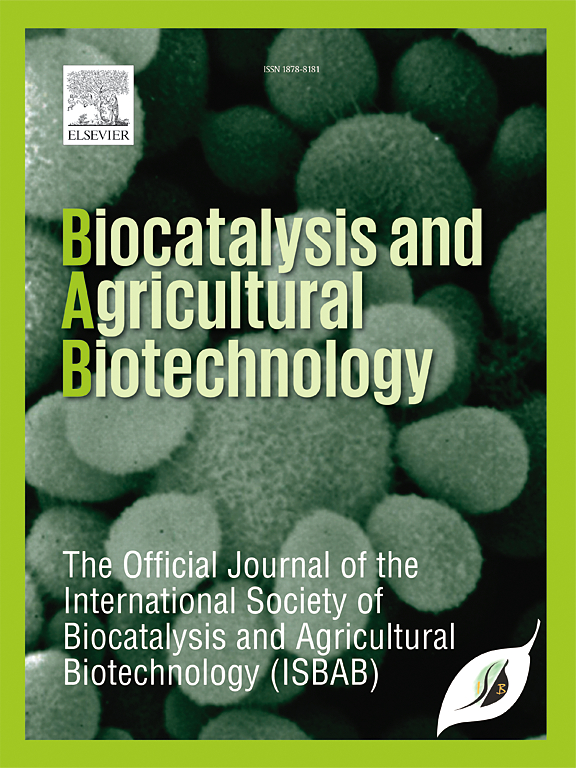Isolation of biosurfactant-producing bacteria from dioxin-contaminated soil and their biodegradation capacity to dibenzofuran
IF 3.4
Q2 BIOTECHNOLOGY & APPLIED MICROBIOLOGY
引用次数: 0
Abstract
Dioxin, one of the most toxic chemicals, belongs to persistent organic pollutants, which have adverse effects on ecological and human health. Our study aimed at isolating biosurfactant producing bacteria from three different dioxin-contaminated airbase soils in Vietnam. Biosurfactant-producing ability was tested by culturing in blue agar plate (BAP) and CTAB-methylene blue agar (CTAB-MB), and testing drop collapse, oil dispersion, and emulsification tests. Biosurfactant compounds were characterized using Gas Chromatography Coupled Mass Spectrometry (GC-MS) and Fourier Transform Infrared Spectroscopy (FT-IR) for fatty acid composition and functional groups; and anion charge. The results showed that 19 bacteria were qualitatively identified as biosurfactant producing bacteria. The best three isolates, AL1, AL2, and AL3 reacted positively to BAP, CTAB-MB, and Collapse Drop Tests, and presented high emulsification capacity (E24 > 52% after 7 days), hemolytic activity (HA) from 1.93 to 2.23 cm, and high potential to reduce surface tension (RST) from 3.70 to 6.07 cm. Based on colony morphology, biochemistry, and 16S rDNA gene sequence similarity, especially production of pigment with different extents in the liquid medium they were identified as Pseudomonas aeruginosa strain AL1, strain AL2 and strain AL3. The biosurfactant products contained palmitic acid, anionic lipopeptide with amino (-NH), hydroxyl (-OH), carbonyl (-C=O), alkyl, and ether (C-O-C) groups. The biosurfactant-producing bacteria achieved between 84.8% and 94.1% biodegradation of Dibenzofuran (DF) after 30 days of experimentation. Dibenzyl and Dibenzyl ether were the key intermediates in the DF degradation. All three indigenous P. aeruginosa (AL1, AL2, AL3) strains showed angular deoxygenation metabolic pathways.

求助全文
约1分钟内获得全文
求助全文
来源期刊

Biocatalysis and agricultural biotechnology
Agricultural and Biological Sciences-Agronomy and Crop Science
CiteScore
7.70
自引率
2.50%
发文量
308
审稿时长
48 days
期刊介绍:
Biocatalysis and Agricultural Biotechnology is the official journal of the International Society of Biocatalysis and Agricultural Biotechnology (ISBAB). The journal publishes high quality articles especially in the science and technology of biocatalysis, bioprocesses, agricultural biotechnology, biomedical biotechnology, and, if appropriate, from other related areas of biotechnology. The journal will publish peer-reviewed basic and applied research papers, authoritative reviews, and feature articles. The scope of the journal encompasses the research, industrial, and commercial aspects of biotechnology, including the areas of: biocatalysis; bioprocesses; food and agriculture; genetic engineering; molecular biology; healthcare and pharmaceuticals; biofuels; genomics; nanotechnology; environment and biodiversity; and bioremediation.
 求助内容:
求助内容: 应助结果提醒方式:
应助结果提醒方式:


